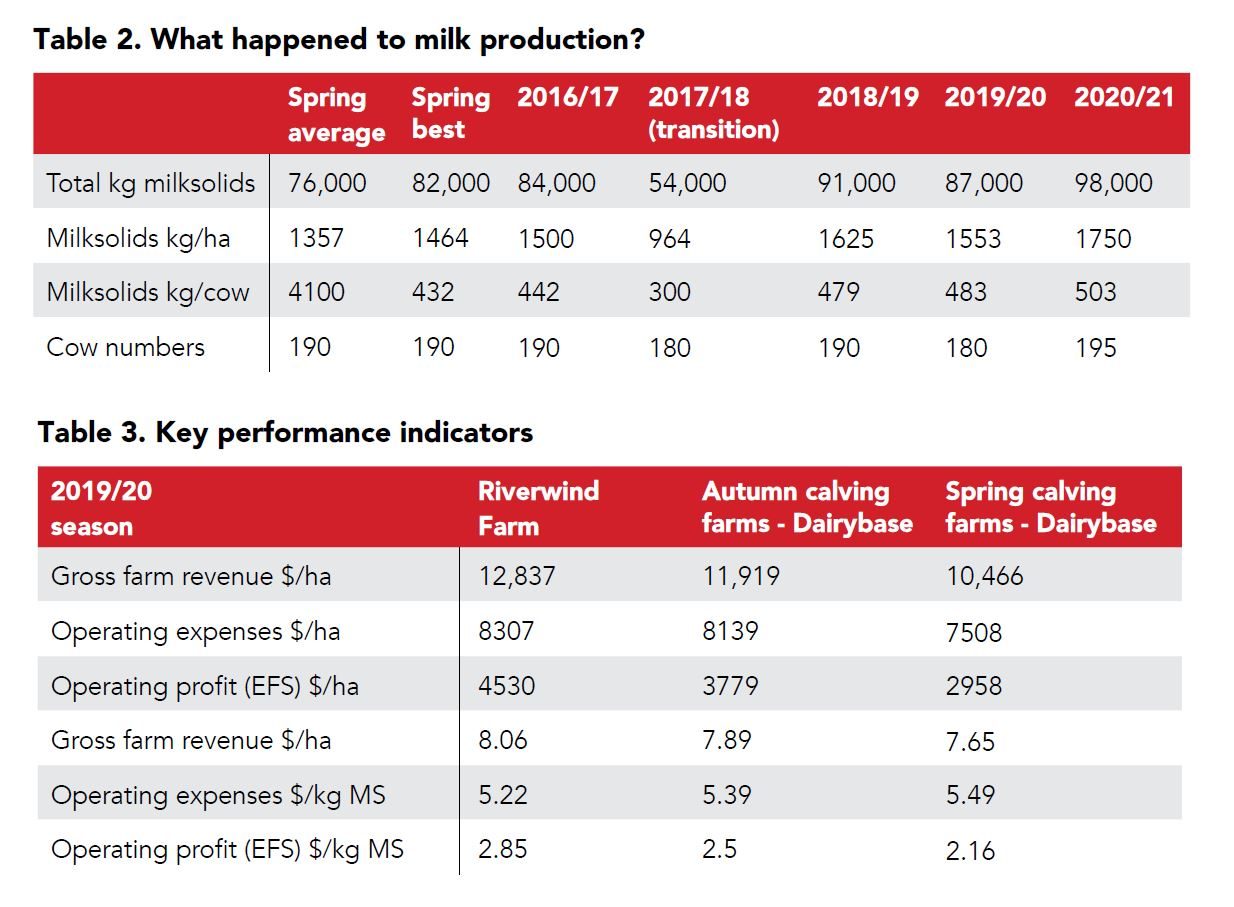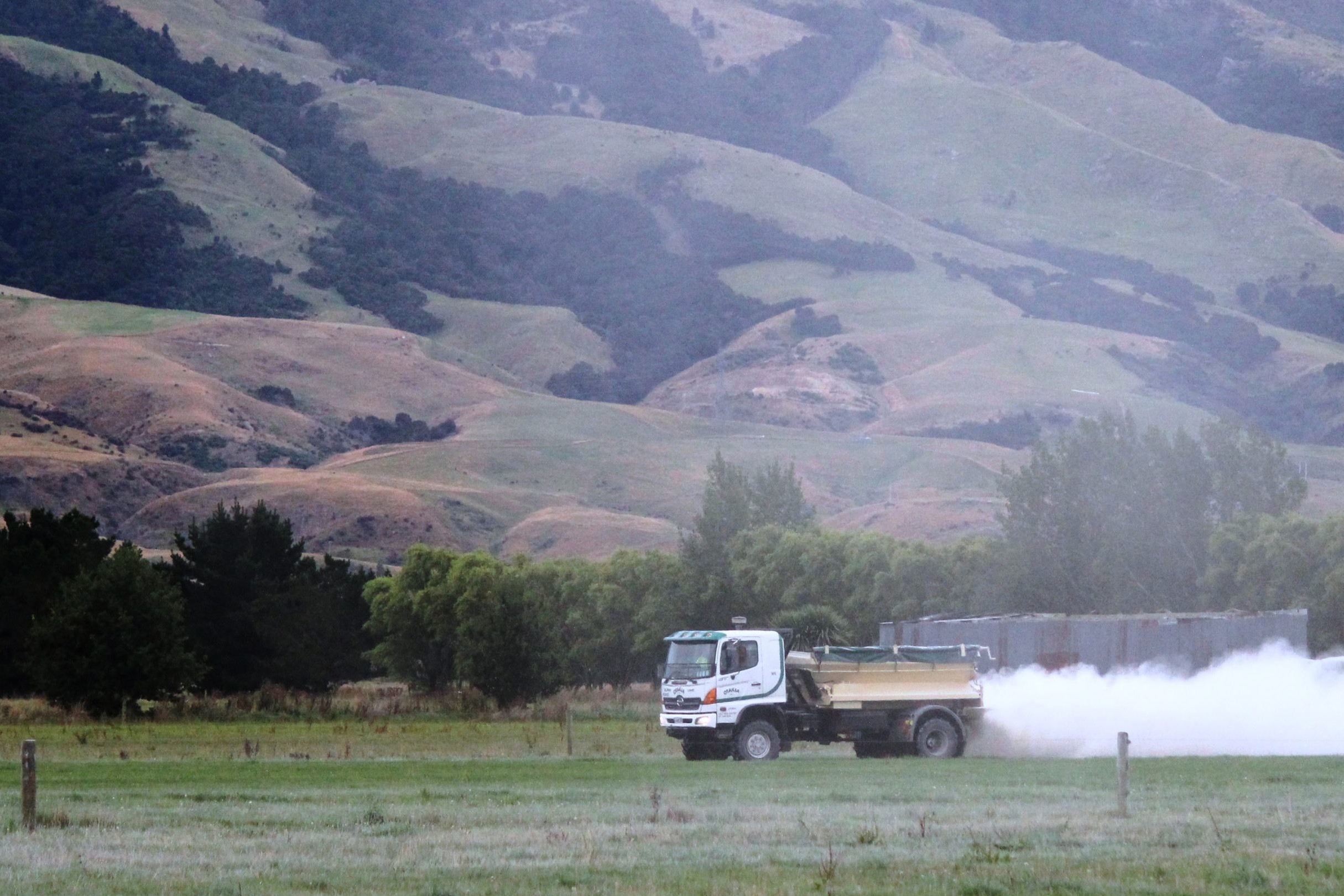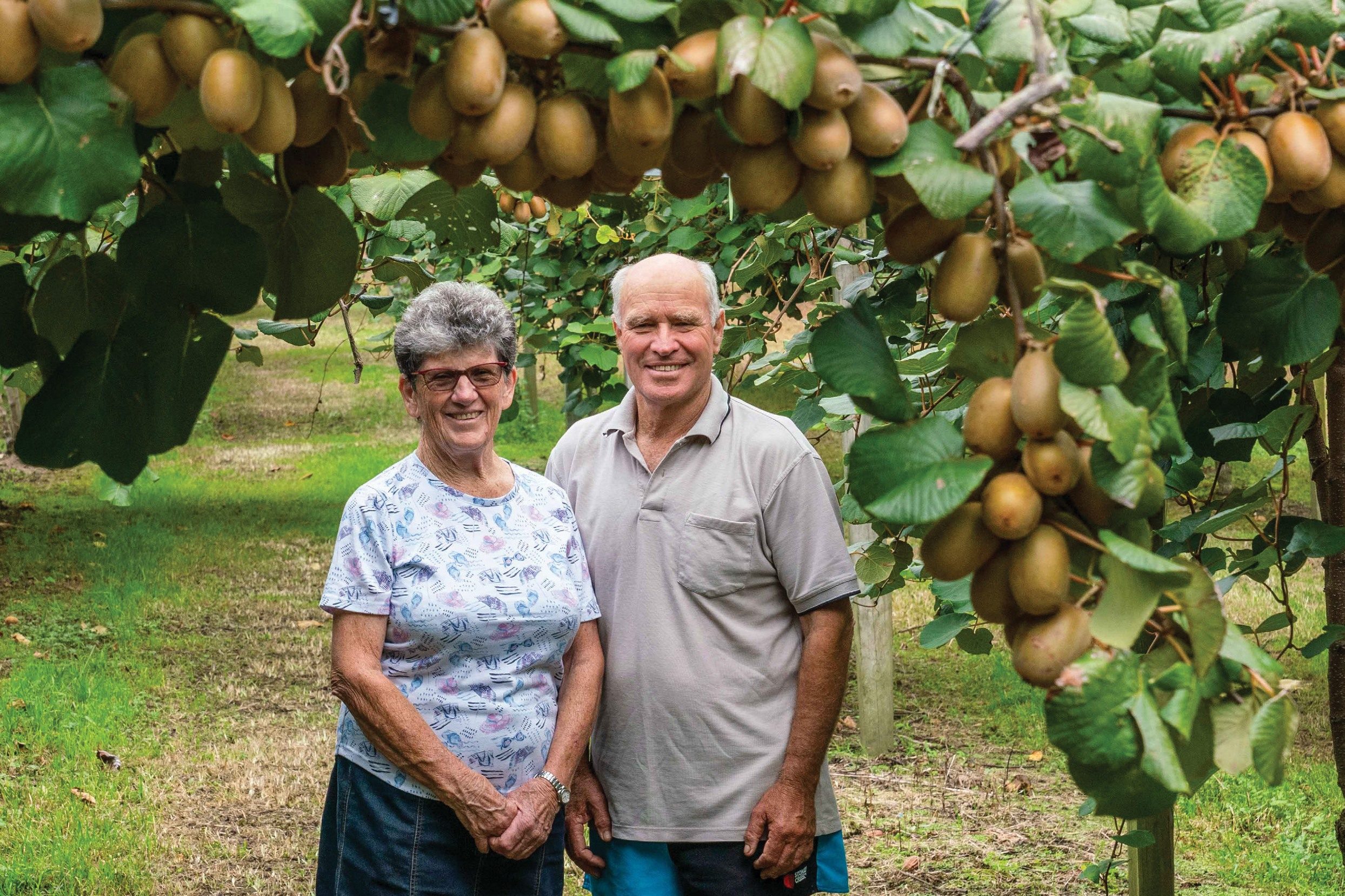Tracee Judd and Alastair Snowden moved their herd to autumn calving and winter milking in 2018 and say the benefits have been worth it. Jackie Harrigan reports.
Responding to poor performance and falling production in late lactation, Tracee Judd and Alastair Snowdon transitioned their entire herd to autumn calving and winter milking in 2018 and say they would never go back to spring calving.
The couple farm 200 Kiwicross cows at Inaha in coastal South Taranaki and say the effects of longer, drier summers and warmer winters caused them to overhaul their system.
“From Christmas onwards milk solids were dropping, we were culling cows both pre- and post-Christmas and contending with skinny heifers.
“Once we had fed out all our silage we were drying off by April 20 and always felt we were missing out on 30 days of lactation.”
A comparison of pasture growth rates from 2009/12 and 2013/17 (Graph 1) when they started using autumn ProGibb to help recover from the summer dry highlighted to Tracee the true seasonality of their pasture growth.
“With climate change, we felt we were getting longer summer dry periods and warmer winters.
“The response to the ProGibb showed we were almost doubling our growth rate in the April-May period.
“But what was more interesting was that growth rate in the February-March period was very similar to that in June and July – so we thought to ourselves if we calve in March and put our feed into the deficit in June-July in mid-lactation, we would get a better response from the cows rather than trying to fill the deficit at the end of the lactation.
“That was really the decision we came to.”

Transition
The cows were transitioned to autumn calving by milking through an 18-month period from spring 2016 to the end of 2017 and mated in June 2017 for calving March 2018.
In the transition year 2017/18, the herd produced lower kg MS (54,000 vs spring calving production best of 82,000), which Tracee referred to as the ‘cost of transitioning’, but now the autumn calving herd is producing more than 98,000kg MS, and receiving a higher average milk income with the premiums for out of season milk.
Premiums are $2.85/kg MS extra for the second half of May, $3.80/kg MS through June, and back to $2.85/kg MS for the first half of July.
To ensure they had enough winter feed the couple purchased and installed an in-shed feeding system at a cost of $30,000 and started applying ProGibb and SustainN from May to August behind the cows. Nitrogen use has increased from 112kgN/ ha/year under the spring calving regime to 196kgN/ha/year under autumn calving – an increase that Tracee admitted may have to reduce under the new water quality regulations.

Tracee and Alastair are pretty pleased with the change – while the system has lifted to a system three-four, she says it’s much more satisfying farming when they know that their cows are fully fed and happy.
“It was beneficial to confirm what we thought – that changing to autumn calving would be a good move – production is up, costs are slightly higher than the benchmark group, (due to the supplementary feed), but when we come down to operating profit we are still ahead of the game there.
“The early results from the Dairy Taranaki Trust Kavanagh farm autumn vs spring calving trial has also confirmed the advantages of autumn calving for us. It’s really encouraging.”
PROS
- Much improved production and profitability
- Full lactation achieved – this season all of the 195 cows were milked through to the end of the season, still producing 1.5kg MS/day at the end.
- Flatter production curve – the cows peaked at 2.2kg MS/cow/day in June and held at 2kg MS/day level until October, “one year the second peak in October was higher than the June peak”.
- Improved calf health, cow health and farmer wellbeing. Tracee said Alastair checks the springing cows in his shorts and jandals after lunch in March – “it is a lot better time to be calving”.
- Better year-round cow condition – the cows dry off at condition score 5 all ready for calving.
- Cows are always fully fed during the winter cold spells.
- The calves are happier – they sit around warm and asleep and grow really well – they can be harder to catch though, Tracee laughed, because they are fast runners on the dry ground.
CONS
- Mating and heat detection in June is difficult. While the couple were used to 6-10% not-in-calf (NIC) under spring calving, their 22% NIC rate after the June 2018 mating gave them a “hell of a fright – we were shocked and went through the season with lower cow numbers”, Tracee said. She put it down to lower daylight hours and correspondingly less aggressive heats.
“This can be a major cost and difficult to overcome.”
The couple have overcome it though, by making sure there is a dedicated person in the shed picking heats, even when the tail paint is only slightly faded or rubbed.
In 2019 they achieved 10% NIC and in 2020 14%, with a reduced 10-week mating period – five weeks of AI and five weeks of bulls.
A possible solution would be to use technology for heat detection, either the boluses or collars.
- An intense period of tractor work from May to August applying ProGibb and SustainN, which Tracee says is Alastair’s job, and he gets pretty tired driving round and round in circles after the cows.
- Good track condition and maintenance is essential to minimise lame cows, Tracee says. In their first year of autumn calving they had more lame cows than usual, but the tracks have been upgraded and are now like main highways so lameness has reduced.
“You have to get used to muddy, messy and weedy gateways too – you can live with them as long as they are not causing lameness.”
FARM FACTS:
- Farm owners: Tracee Judd and Alastair Snowdon, third generation, 101 years
- Farm: Riverwind Farm, Inaha, Manaia
- Size: 56ha eff, support block: 24ha
- Cows: 200 Kiwicross cows
- Stocking rate: 5 cows/ha
- System 4, in-shed feeding Custom blend from BHL and PROLIQ






